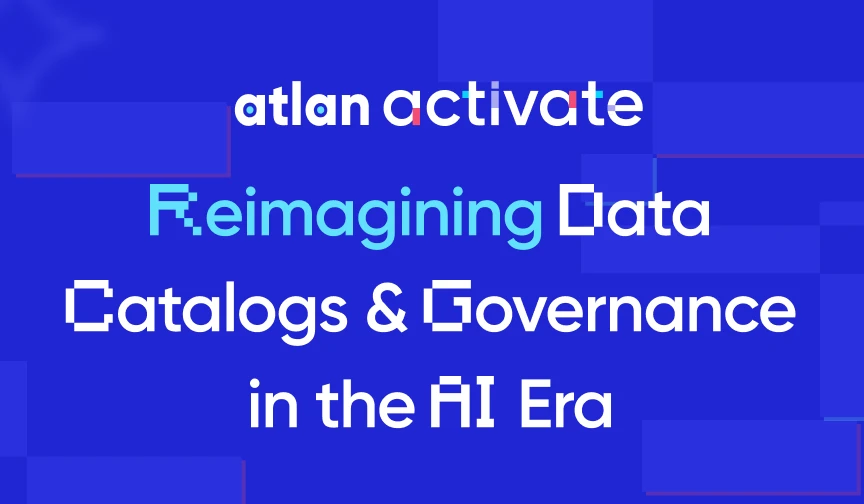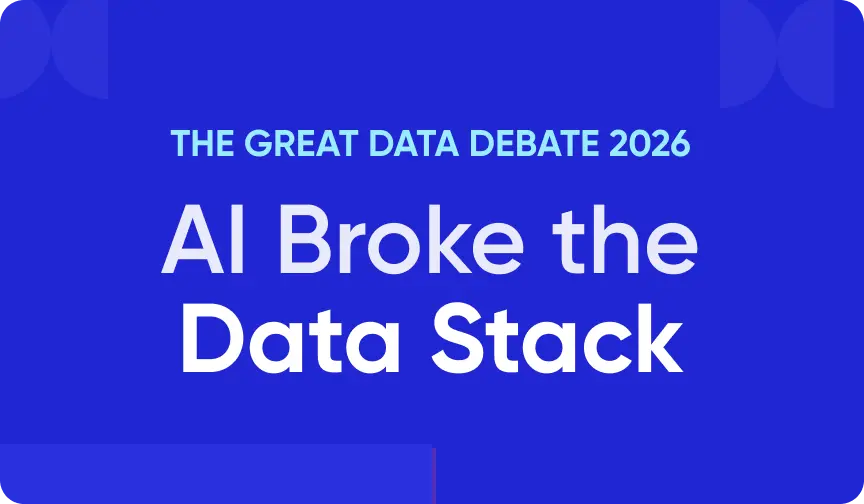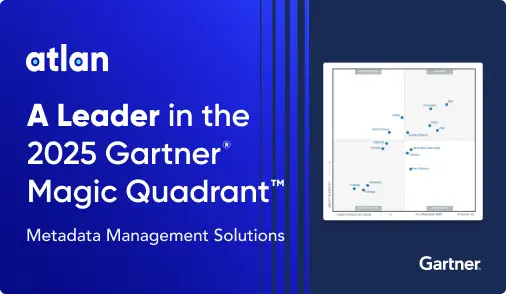Automated PII Classification: The Key to Implementing Enterprise Compliance at Scale

Last Updated on: December 10th, 2025 | 8 min read
Automated PII classification refers to the process of identifying and tagging sensitive personal data across systems using rule-based automation, AI, and active metadata.
Automation helps data and compliance teams move beyond manual, unsustainable approaches. Mastering automated PII classification is critical to meet rising regulatory demands, build trust in data, and unlock business value in an increasingly data-driven economy.
In this article, we’ll cover:
- The core principles of automated PII classification and why it matters
- Key technologies driving automation
- Business benefits and common challenges
- How to implement a scalable, compliant automated PII classification mechanism
Table of contents
Permalink to “Table of contents”- What is automated PII classification?
- What does implementing accurate PII classification at scale involve?
- What are the core capabilities required to implement automated PII classification?
- How to implement automated PII classification at scale with Atlan
- A quickstart checklist for automated PII classification
- Wrapping up: Scale PII classification with automation, metadata, and AI
- Automated PII classification: Frequently asked questions (FAQs)
What is automated PII classification?
Permalink to “What is automated PII classification?”Automated PII classification is the process of using rule-based automation, AI, and active metadata to accurately identify and tag personally identifiable information (PII) across an organization’s data estate.
It replaces manual tagging, enabling scalable, precise classification at the attribute level—such as pinpointing sensitive fields like Social Security numbers or email addresses, not just datasets as a whole.
Gartner highlights that automated PII classification is foundational for scalable data governance.
Effective PII classification relies on a risk-based approach, prioritizing protection based on data sensitivity and potential impact. As McGeorge Bundy once said, “If we guard our toothbrushes and diamonds with equal zeal, we will lose fewer toothbrushes and more diamonds.”
That’s why the most common approach to PII classification is a risk-based approach. This involves categorizing data based on its sensitivity and the potential harm a breach could cause, ensuring that high-risk data receives proportionately stronger safeguards.
In industries like finance, healthcare, and insurance, where regulatory scrutiny is high and data volumes are massive, achieving this level of precision at scale is critical. Let’s look at what that actually involves.
What does implementing accurate PII classification at scale involve?
Permalink to “What does implementing accurate PII classification at scale involve?”Scaling PII classification without sacrificing accuracy means balancing precision and recall. High recall captures most PII but risks false positives, while high precision minimizes false alarms but may miss some sensitive data. Striking the right balance is critical, especially in regulated industries like finance and healthcare.
Real-world challenges include detecting dynamic PII hidden in free-text fields, handling obfuscated or anonymized data, and scanning structured, semi-structured, and unstructured formats. Automated classification must operate across all formats using a mix of rule-based and AI-driven methods.
To handle these complexities at enterprise scale, organizations need more than scanning tools. They need continuous intelligence about their data and that’s where active metadata and data lineage become indispensable.
What roles do active metadata and data lineage play in accurate, automated PII classification?
Permalink to “What roles do active metadata and data lineage play in accurate, automated PII classification?”Active metadata for real-time sensitivity tracking
Active metadata enables real-time, bidirectional data exchange across your data ecosystem using open APIs. Gartner defines active metadata management as any capability that enables continuous access and processing of metadata to support ongoing analysis of data.
This is a key requirement for keeping PII classification accurate, scalable, and audit-ready. Active metadata provides the live context needed to detect sensitive attributes across dynamic environments.
It allows organizations to automatically propagate confidentiality, integrity, and availability (CIA) ratings down to the column level through real-time lineage. This automation is crucial for keeping pace with evolving regulations like GDPR, CCPA, and the EU AI Act, where delayed or incomplete classification can lead to fines or compliance gaps.
Also, read → What is active metadata? Your 101 guide.
Data lineage for traceable classification decisions
Meanwhile, data lineage tracks the journey of data across an organization, mapping its path from source to destination, and capturing how it is transformed along the way.
For automated PII classification, data lineage ensures that classification decisions are traceable. If a dataset is classified as containing PII at the source, lineage helps propagate that classification automatically to all derived datasets, dashboards, and reports. This reduces the risk of sensitive information being exposed unnoticed in downstream systems and shortens the time needed for incident response and audits.
Also, read → Data lineage explained
Together, active metadata and granular data lineage create an end-to-end, real-time view of sensitive data across your estate. This foundation strengthens your ability to enforce privacy controls, demonstrate regulatory compliance, and respond faster to audits and incidents.
Building on the critical role of active metadata and data lineage, implementing automated PII classification at scale requires specific technical capabilities. Let’s dive into the specifics.
What are the core capabilities required to implement automated PII classification?
Permalink to “What are the core capabilities required to implement automated PII classification?”The core capabilities needed to successfully deploy automated PII classification in a modern, complex data environment include:
- Active metadata management: Continuously capture, sync, and enrich metadata across all platforms to enable real-time classification at scale.
- Tag propagation via lineage: Automatically carry forward PII classifications across downstream systems via column-level lineage.
- Bi-directional tag sync: Ensure that PII classifications stay consistent between your metadata layer and underlying source systems (like Snowflake, Databricks, BigQuery).
- Extensibility across diverse data environments: Ensure extensibility and interoperability across cloud, hybrid, and on-premises systems without requiring constant reconfiguration.
How to implement automated PII classification at scale with Atlan
Permalink to “How to implement automated PII classification at scale with Atlan”Effective automated PII classification requires scanning table and column metadata and then applying custom metadata fields to identify and manage PII, such as email address, name, phone number, national ID, and passport ID.
Atlan’s active metadata platform is designed to meet these exact needs, helping enterprises move beyond static, siloed classification approaches.
By combining active metadata, lineage, and governance automation, Atlan provides a scalable path to audit-ready PII classification for financial services, healthcare, and other highly regulated industries.
Here’s how Atlan drives automated PII classification at scale:
- Flagging high-risk or unknown PII types
- Alerting data stewards on validating and annotating results of an auto-classification
- Powering downstream governance, lineage, and compliance workflows with integrated policy enforcement across systems
- Propagating tags based on hierarchy and lineage–if you tag a table as PII, its downstream columns will get tagged as PII too
Note: Tag propagation is disabled by default in Atlan, and Atlan doesn’t auto-detect PII data. It propagates PII tags to downstream assets if you’ve enabled tag propagation manually, or automated the task using Playbooks.
How Swapfiets automated PII classification with Atlan
Permalink to “How Swapfiets automated PII classification with Atlan”Swapfiets, the world’s first bicycle subscription service, integrated Atlan with Redshift, dbt, Tableau, and Snowflake to build a one-stop-shop for their data assets.
Using Atlan’s Playbooks (rule-based automation), Swapfiets managed to automatically tag sensitive or PII data. With Atlan’s personas, Swapfiets ensured that sensitive data was available only to those authorized to view it, or contribute to documenting it.
“We don’t have any PII in Tableau anymore, because access management is easier in Atlan. Now, it’s transparent how many assets have PII data, who can access those, when they are used, and who queries which tables.” - Lisa Smits, Manager of Swapfiets’ Data & Analytics team
A quickstart checklist for automated PII classification
Permalink to “A quickstart checklist for automated PII classification”Here’s a checklist to help data teams operationalize automated PII classification quickly and effectively:
- Identify PII-prone data sources
- Integrate an active metadata platform (like Atlan)
- Set up PII detection rules
- Apply PII tags automatically
- Enable lineage-based tag propagation
- Run early and frequent audits
- Establish feedback loops
- Map and cover all downstream tools
- Create audit-readiness documentation
- Regularly review and update policies
Wrapping up: Scale PII classification with automation, metadata, and AI
Permalink to “Wrapping up: Scale PII classification with automation, metadata, and AI”With rule-based logic, AI, and active metadata, a control plane for metadata like Atlan weaves automated PII classification into the data lifecycle. Organizations can ensure PII is accurately identified, consistently tagged, and appropriately protected at scale.
For data leaders, this means fewer manual errors, faster audits, stronger policy enforcement, and greater trust in data operations. As the regulatory landscape and AI-powered technologies rapidly evolve, investing in scalable classification capabilities is key to enabling responsible data use across the enterprise.
Automated PII classification: Frequently asked questions (FAQs)
Permalink to “Automated PII classification: Frequently asked questions (FAQs)”1. What is automated PII classification?
Permalink to “1. What is automated PII classification?”Automated PII classification refers to using AI, rules-based automation, and metadata to identify and tag personally identifiable information across data systems, eliminating manual tagging.
2. Why is automated PII classification important for financial institutions?
Permalink to “2. Why is automated PII classification important for financial institutions?”It helps meet data privacy regulations like GDPR, CCPA, GLBA, and AI-specific regulations like the EU AI Act. Automated PII classification also reduces human error in compliance and audit reporting, enforces access controls, and ensures data protection across growing, dynamic datasets.
3. How does active metadata support PII classification?
Permalink to “3. How does active metadata support PII classification?”Active metadata enables real-time data context and supports bi-directional tag sync with source systems. It tracks how data is used and where it flows, helping systems auto-classify PII and keep that classification accurate as data evolves.
4. What is the role of data lineage in PII classification?
Permalink to “4. What is the role of data lineage in PII classification?”Data lineage maps how data flows across systems, from source to consumption. It helps ensure PII tags are propagated through transformations and can trace policy coverage and potential exposure points.
5. What should I look for when evaluating PII classification tools?
Permalink to “5. What should I look for when evaluating PII classification tools?”Prioritize tools that offer real-time detection, rule-based automation, granular (field-level) tagging, tag propagation via lineage, and bi-directional sync with platforms like Snowflake or BigQuery.
6. How does automated PII classification help with audit readiness?
Permalink to “6. How does automated PII classification help with audit readiness?”It ensures consistent tagging and traceability, making it easier to demonstrate policy enforcement and access control during audits, while reducing manual effort.
7. What are the risks of not having automated PII classification?
Permalink to “7. What are the risks of not having automated PII classification?”Without automated PII classification, organizations risk non-compliance, increased manual workload, inconsistent data protection, and potential fines or reputational damage due to misclassified or exposed PII.
Share this article
Atlan is the next-generation platform for data and AI governance. It is a control plane that stitches together a business's disparate data infrastructure, cataloging and enriching data with business context and security.
Automated PII classification: Related reads
Permalink to “Automated PII classification: Related reads”- Swapfiets: How we automated PII classification
- What is Data Governance? Our approach at Atlan
- Data Compliance Management in Financial Services
- Data Governance and GDPR: What You Need to Know in 2025
- Data Readiness for AI: 4 Fundamental Factors to Consider
- Data Classification and Tagging: How to Marie Kondo Your Data Catalog and Spark Joy
- Automated Data Governance: How Does It Help You Manage Access, Security & More at Scale?
- Enterprise Data Governance Basics, Strategy, Key Challenges, Benefits & Best Practices
- Data Governance in Banking: Benefits, Challenges, Capabilities
- Financial Data Governance: Strategies, Trends, Best Practices
- BCBS 239 Data Governance: What Banks Need to Know in 2025
- Financial Data Compliance Software: What Qualities Matter in 2025
- AI for Compliance Monitoring in Finance: Use Cases & Setup
- Unified Control Plane for Data: The Future of Data Cataloging





















